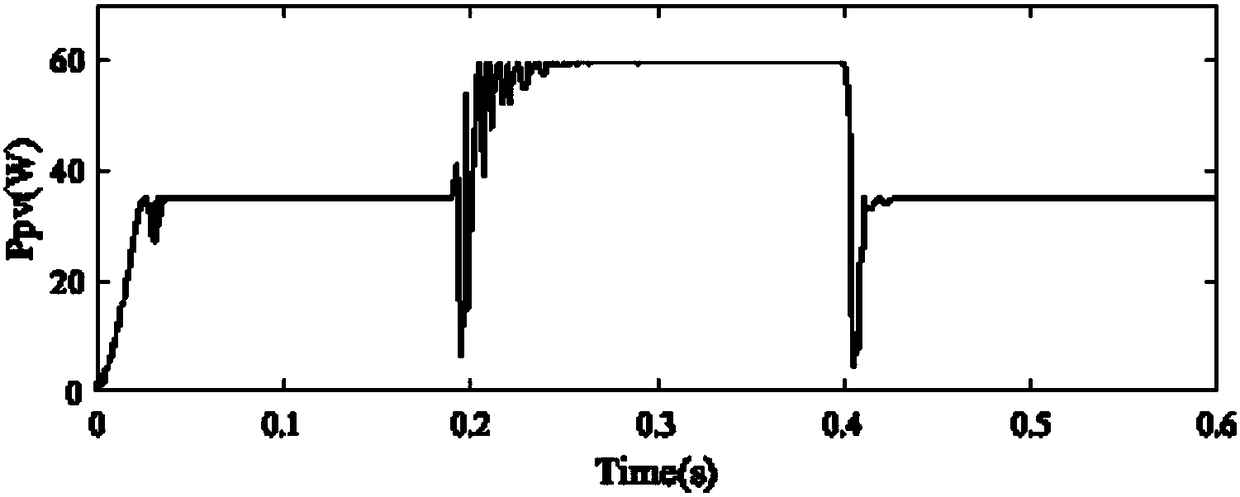Adaptive incremental conductance MPPT algorithm
An self-adaptive and incremental technology, applied in photovoltaic power generation, adjusting electrical variables, instruments, etc., can solve the problems of slow tracking speed, difficult implementation, and difficult implementation, and achieve reduced energy loss, good tracking performance, and high tracking efficiency Effect
- Summary
- Abstract
- Description
- Claims
- Application Information
AI Technical Summary
Problems solved by technology
Method used
Image
Examples
Embodiment Construction
[0034] The specific implementation of the present invention will be further described below in conjunction with the accompanying drawings and examples, but the implementation and protection of the present invention are not limited thereto. achieved or understood by prior art.
[0035] The flow chart of the example algorithm is as follows figure 1 As shown, the related symbols can refer to the existing incremental conductance algorithm, V and I represent voltage and current respectively, V(k), I(k) are the voltage and current at the kth moment, Flag is a steady state mark, If it is 1, it is a steady state, and the duty cycle D only changes in an unsteady state. The main process is as follows:
[0036] (1) Flag is initialized to 0, calculate dV=V(k)-V(k-1), dI=I(k)-I(k-1), dP=V(k)*I(k)-V (k-1)*I(k-1), step size Step1=N1*abs(dI / dV+I / V)(dV≠0& V≠0), step size Step2=N2*abs(dP / dV) (dV≠0), FStep=0.01, N1, N2 can be set according to the actual circuit or according to the experiment,...
PUM
 Login to View More
Login to View More Abstract
Description
Claims
Application Information
 Login to View More
Login to View More - R&D
- Intellectual Property
- Life Sciences
- Materials
- Tech Scout
- Unparalleled Data Quality
- Higher Quality Content
- 60% Fewer Hallucinations
Browse by: Latest US Patents, China's latest patents, Technical Efficacy Thesaurus, Application Domain, Technology Topic, Popular Technical Reports.
© 2025 PatSnap. All rights reserved.Legal|Privacy policy|Modern Slavery Act Transparency Statement|Sitemap|About US| Contact US: help@patsnap.com



